Built by subjects of George III on the eve of the American Revolution, the farmhouse in Chaplin, CT sheltered my family for several years during the 1990s. As irregular stones, wood, and nails show, the muscles of oxen dragged boulders into place to form the foundation / cellar, while the muscles of men felled the trees and sawed the timbers and planks, and formed the nails on an anvil. Nothing is perfectly straight; and many parts creak. Built for simple, pious, hard-working farmers unimaginably poor by our standards, the house is simple. In short, it has a spirit that my portfolio tries to intimate.
Built of wood and stones from the surrounding forest on the eve of the Revolution, the house in Chaplin, CT, in which I lived with wife and daughter for several years, exudes a spirit of simplicity and time that my images aim to not just express but even more, honor.
The portfolio originated with this image, which, like the house as a whole, charmed me so much with its quiet, bold simplicity, that I asked myself, "What other images might I make from just a door?" As it turned out over time, I photographed it dozens of times in different kinds of light, from different sides and distances, using different exposures, lenses, and films, though always in b&w and using large-format. The images of this one, simple object kept surprising me with their diversity in not just appearance but also implied state of mind. Something was intriguingly wrong with the notion of a fixed, intrinsic correspondence between an object and a photograph of it. Photographic treatment of the scene mattered more than the scene "itself." By raising doubts about the notion of a scene-in-itself, this door series anticipated "One Scene, Many Seens," done twenty years later. Measure this work, then, by what it *makes* of scenes, I ask, not by what scenes it *takes.*
Here is (a photograph of) the back of the same door as in #2-#5.
It is difficult to make a print that represents the crack and the surrounding shadow properly dark while distinguishing the two and preserving the floor's texture -- rich wood grain -- right down to the print's bottom edge; difficult but worth it, the surfaces palpable because of a 4x5 negative and Schneider lens. Exposure: at least ten minutes, during which I walked softly.
the same back of the same door as in #2-#6
the back of the same door as in #2-#7
To capture light on a soft afternoon, the shutter was open for about an hour (Tri-X, ASA 160).
This photograph depicts a corner of the hearthstone, with original chestnut floorboards snuggling up to it. The stone must have been hewn into a rectangular face before it was wrestled into place, but in the perhaps eight generations since then, many shoes have smoothed it. In this light, the wood's texture contrasts with the stone's. If I return to the house again, I will give stone its due by including it in more images. This photograph is structured like #1 in Black Ice, made a few years previously, though the resemblance has occurred to me only now, while setting up this website.
With light coming only from the fire itself, the lens stopped down to at least f8, the exposure was long enough for individual sparks to streak as they floated toward the chimney, past the ladle and the iron arm holding it. No wonder the hearthstone was necessary!
Chestnut floorboards near the hearth. Although weak or outright broken lengthwise in many places, creaking, they never gave way. Each nail differed in shape because a smith had struck them never exactly the same way.
Long after moving out, I returned for a (digital) photographic romp that revealed this, overlooked during my years of living there.
Light from one of the small frame windows -- glass must have cost more in the 1770s -- splashed across floor planks uneven everywhere and in some places cracked after two centuries (but not giving way).
Large format reveals every fiber and crack in the wood, and splinter of light.
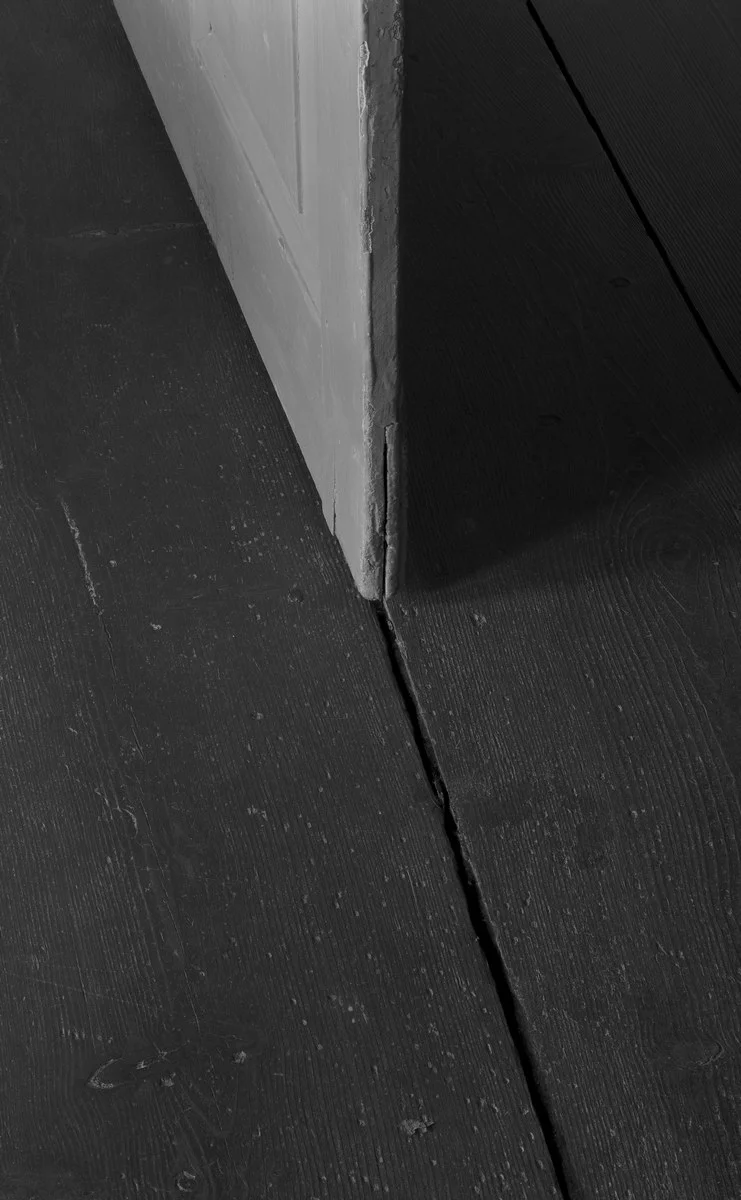
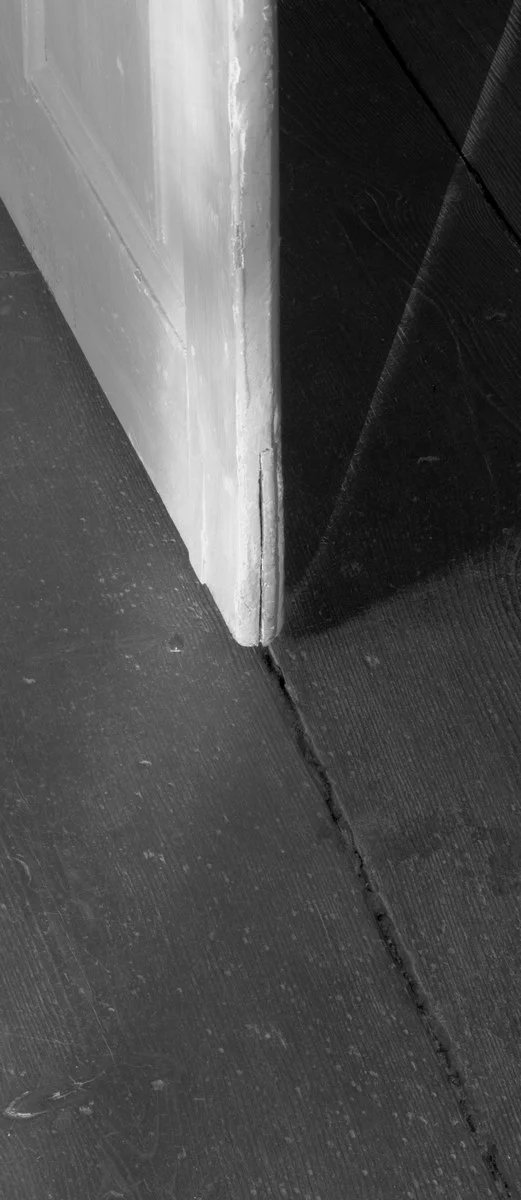





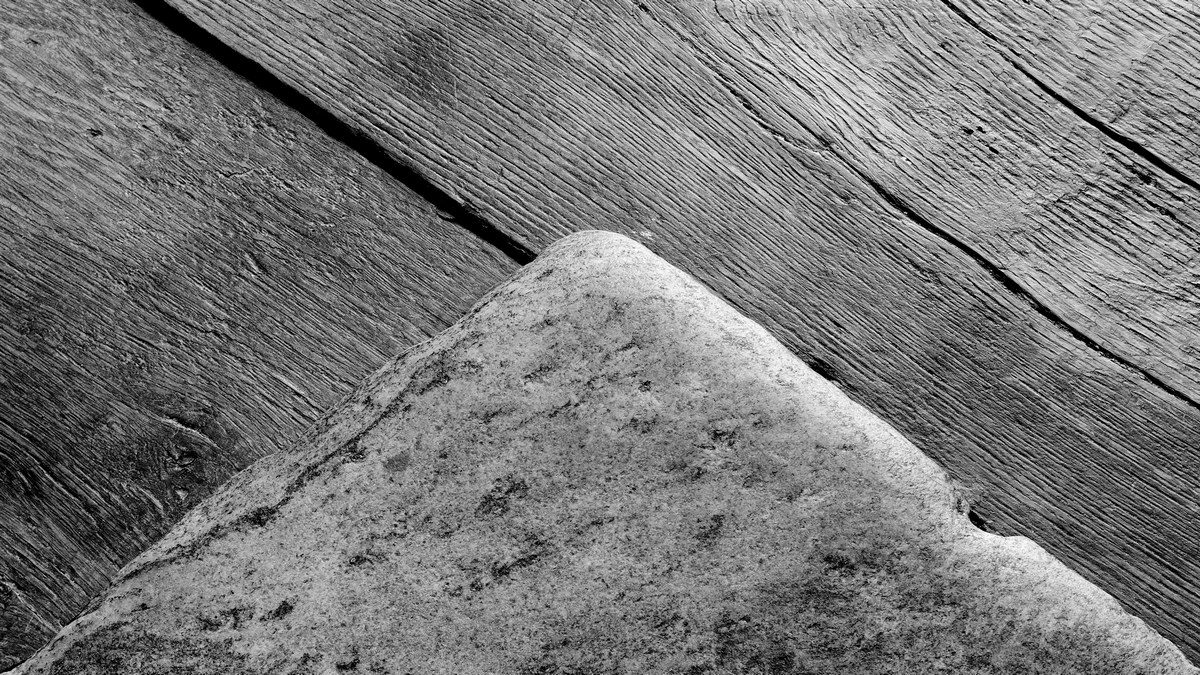
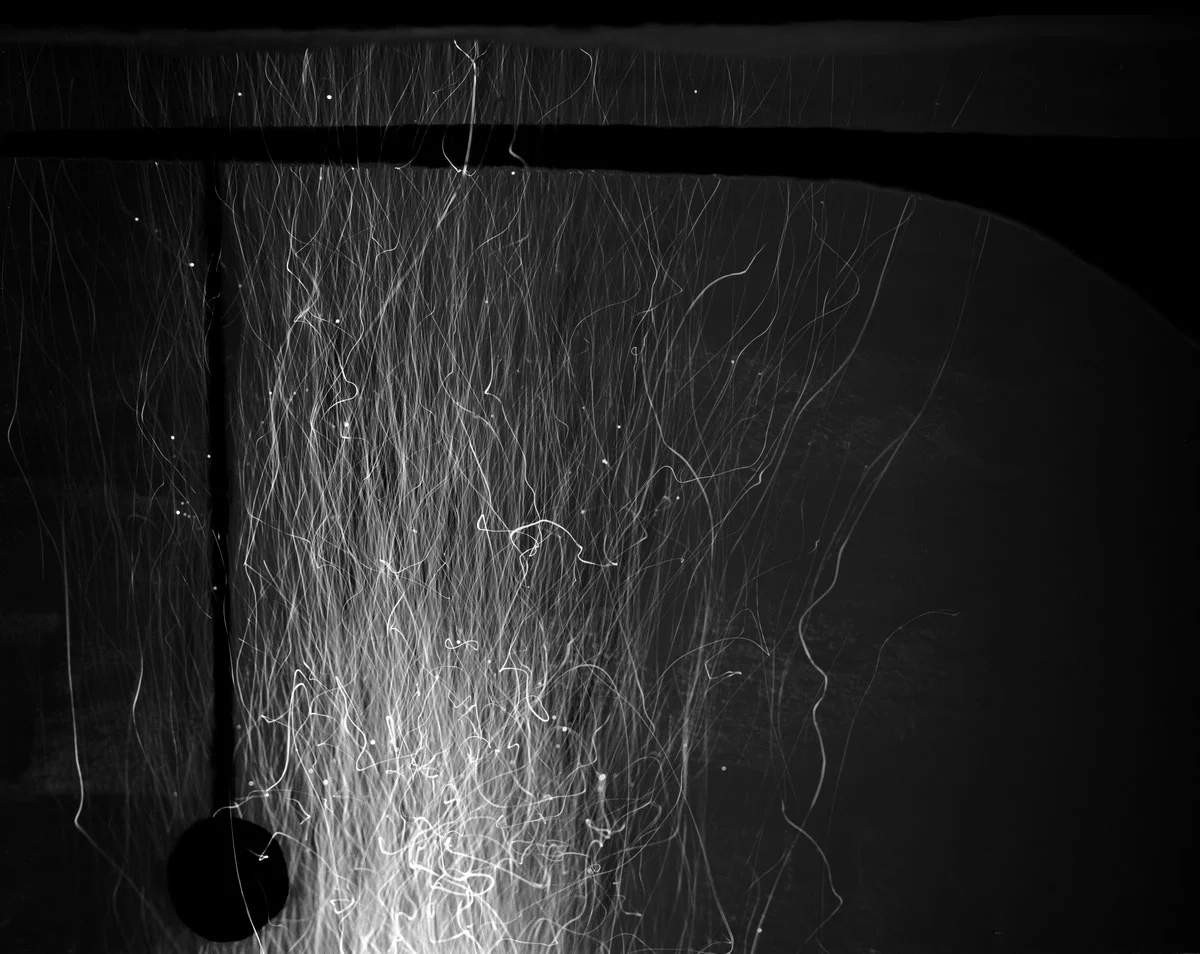

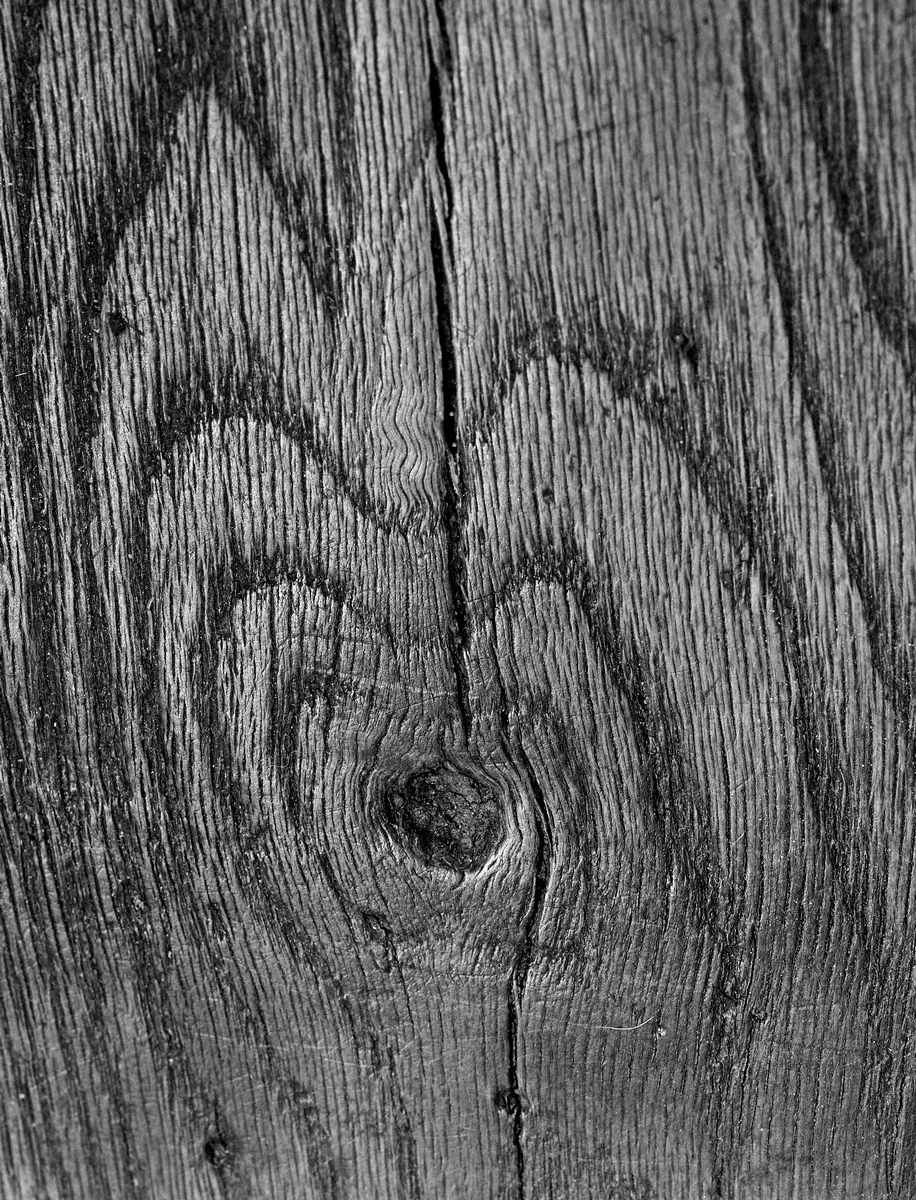
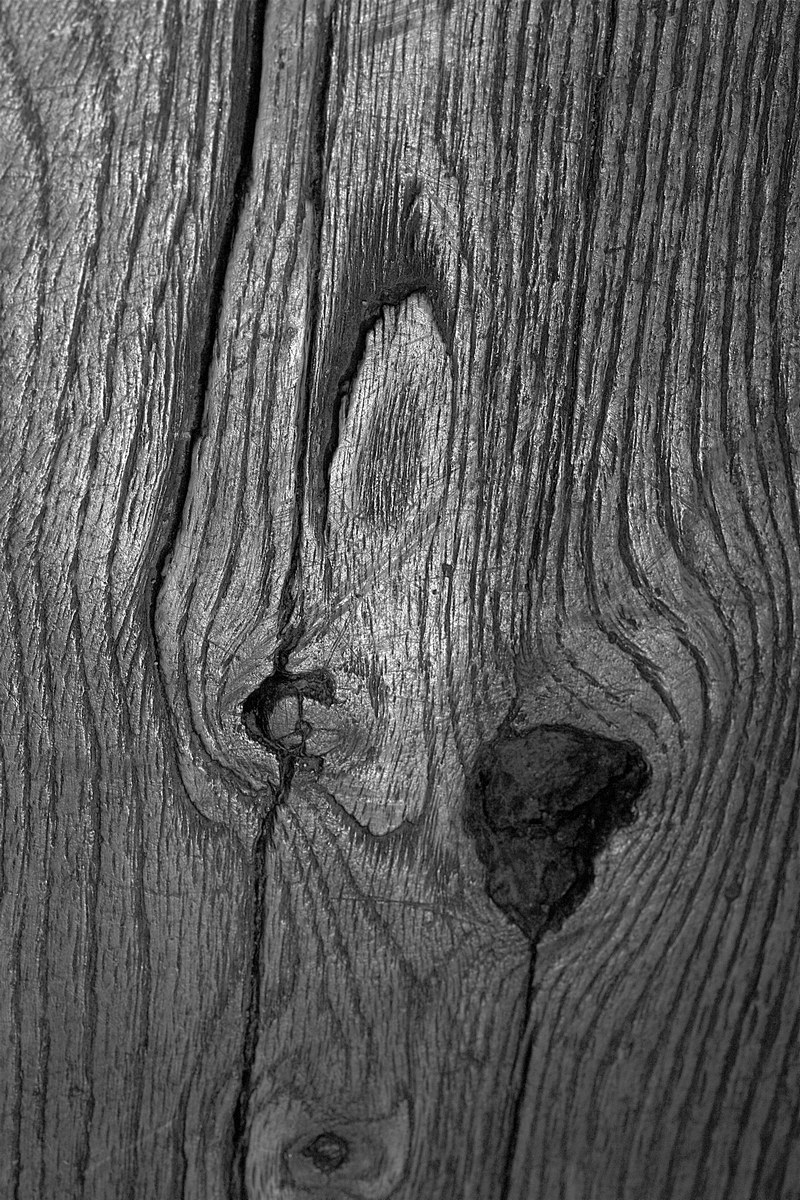
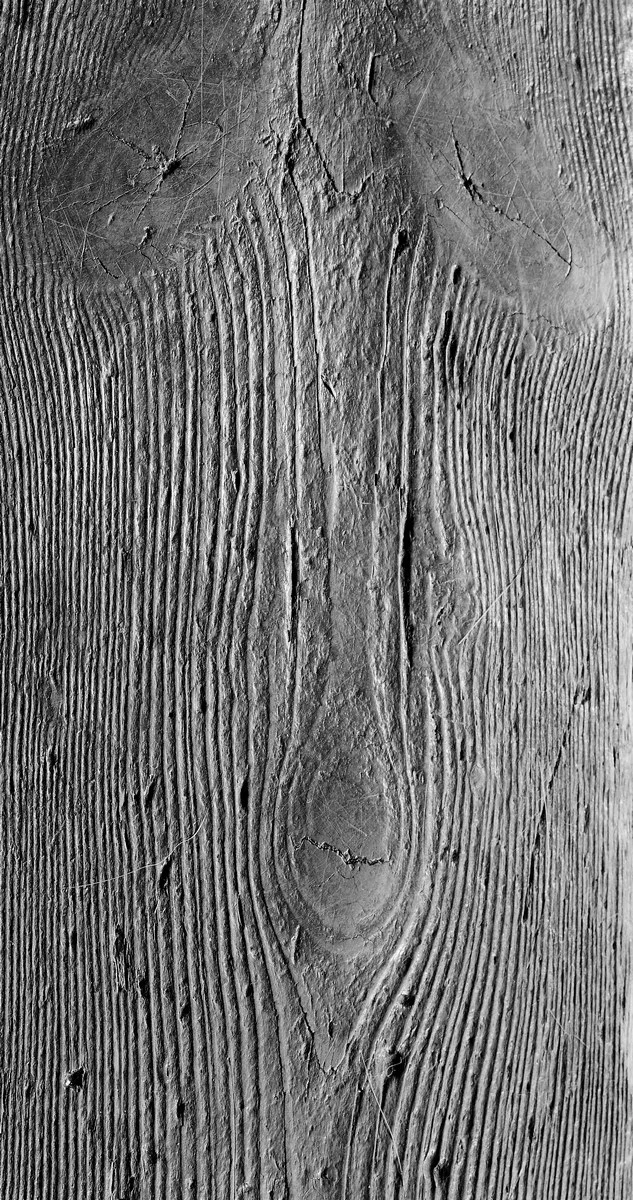
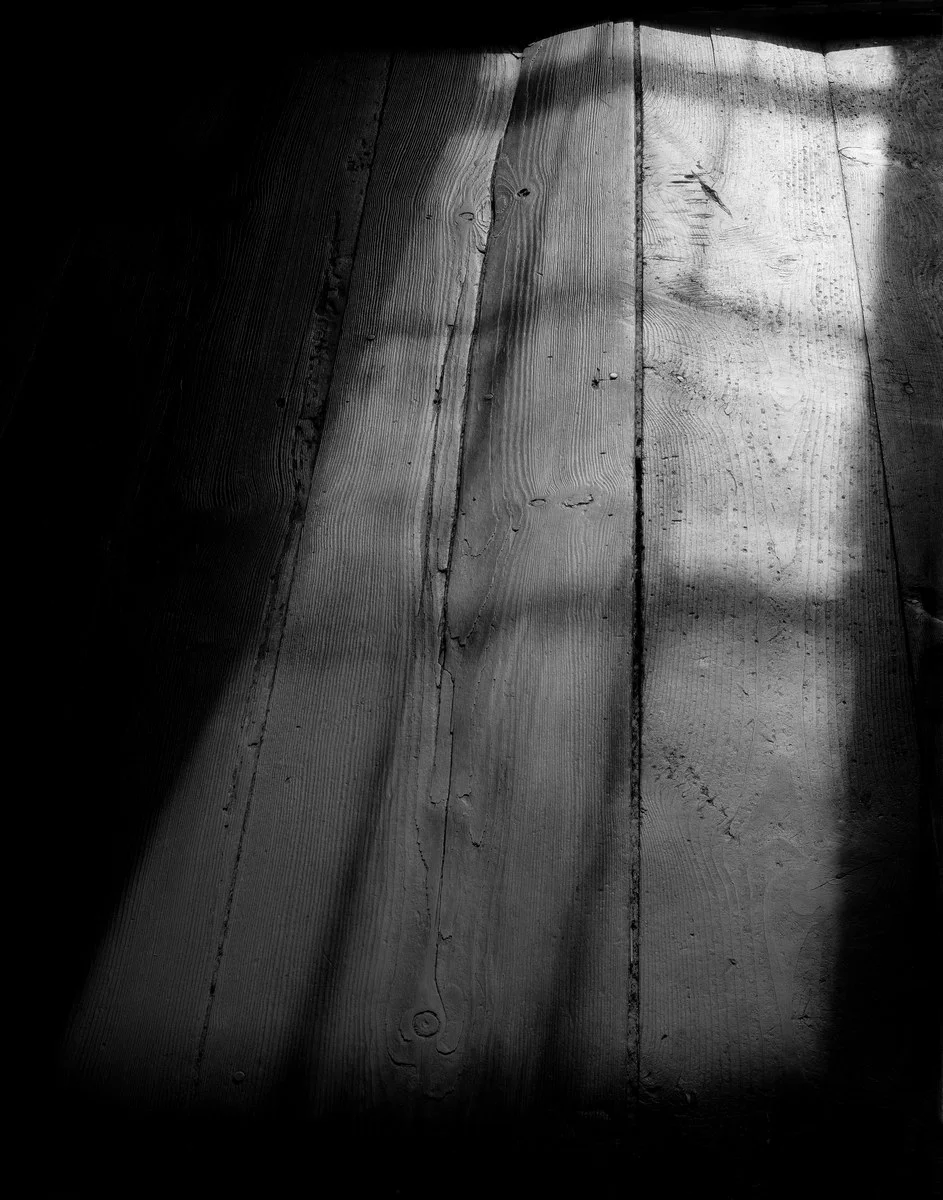
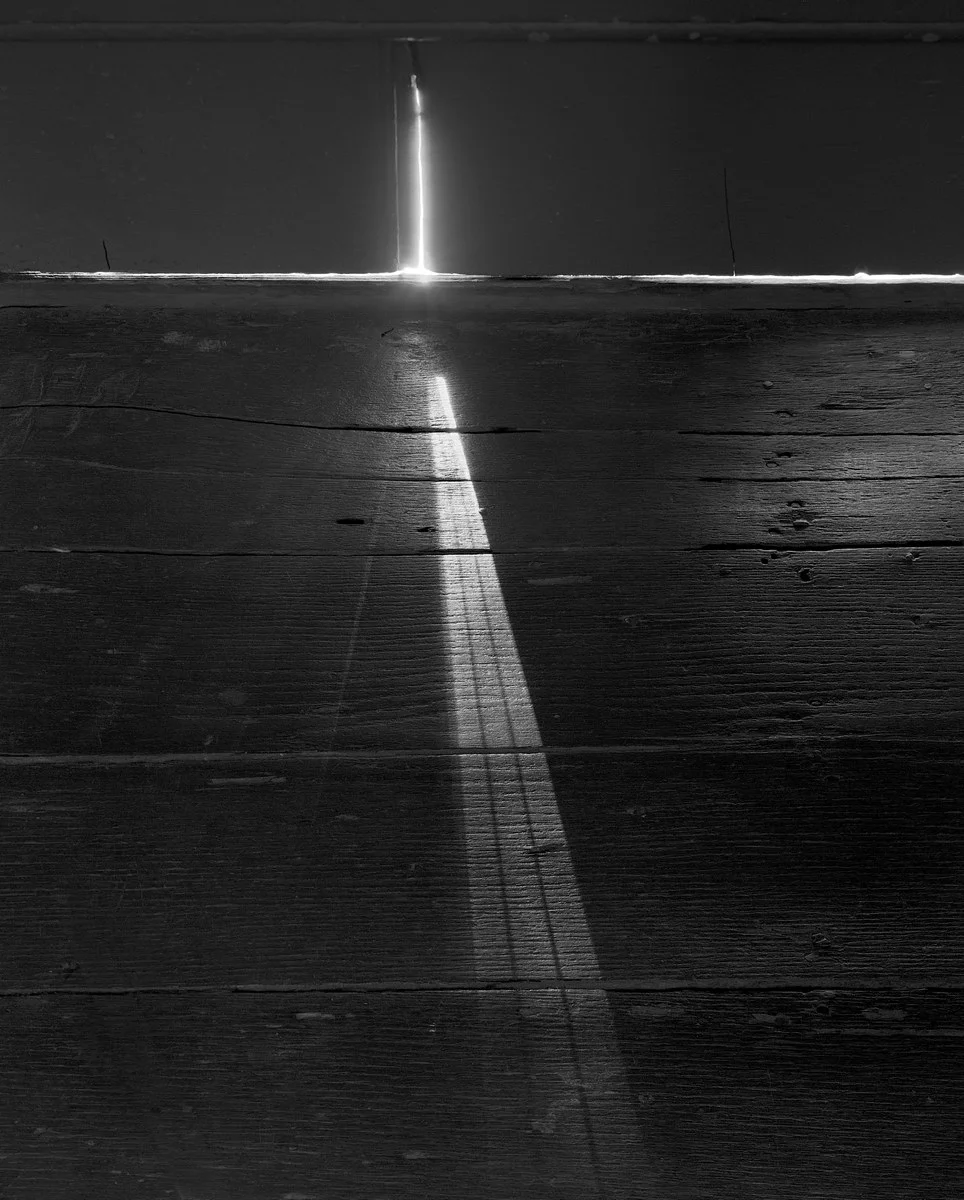
Woods enclose an 18th-century house in Chaplin, CT.